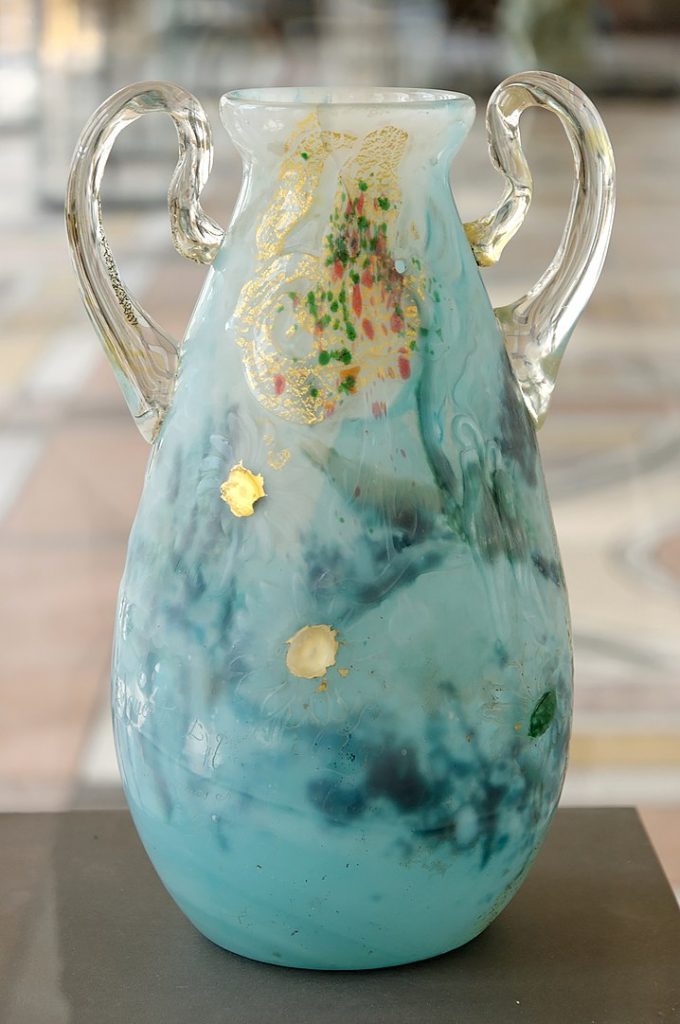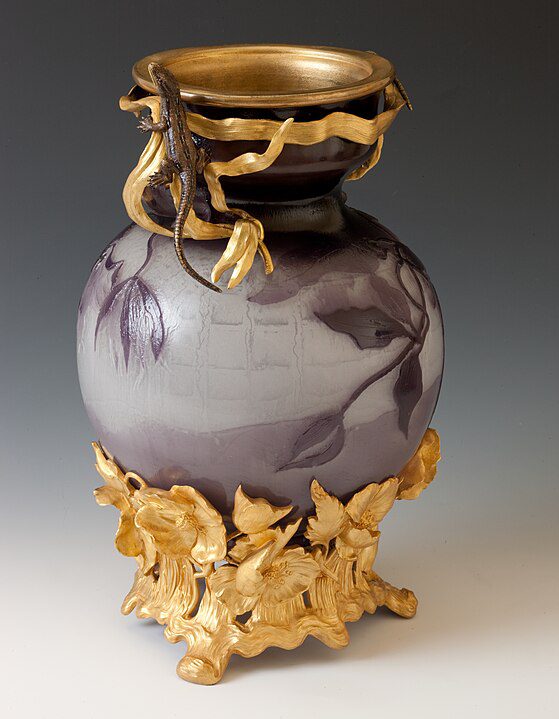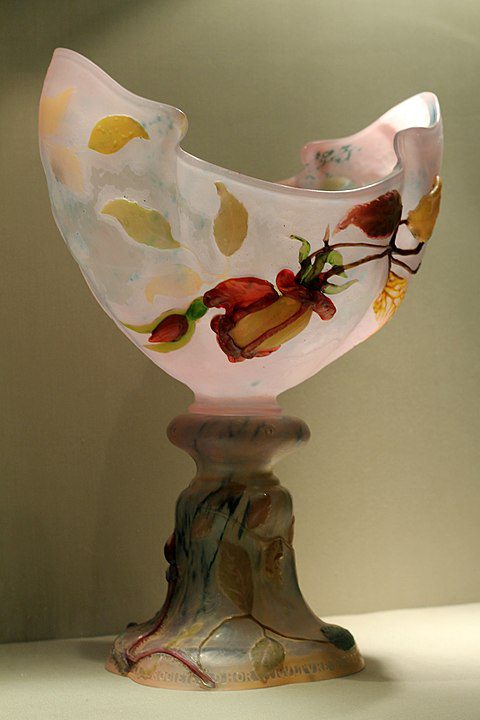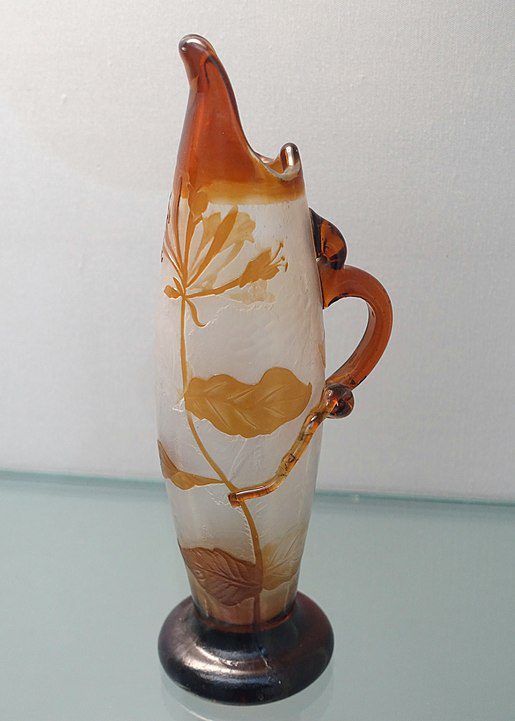
Émile Gallé (1846–1904) was a French artist and designer who played a pivotal role in the development of the Art Nouveau movement. His work, which spanned glassmaking, furniture design, and ceramics, is celebrated for its intricate craftsmanship, innovative use of materials, and the integration of natural motifs into decorative arts. Gallé’s creations were not merely decorative objects; they were expressions of his deep engagement with nature, literature, and social commentary, making him one of the most influential figures in the decorative arts at the turn of the 20th century.
Born in Nancy, France, into a family with an established ceramics and glass business, Gallé was immersed in the world of art and craft from a young age. He studied philosophy, botany, and drawing, which profoundly influenced his artistic direction. Gallé’s education and personal interests in the natural sciences are reflected in his work, characterized by detailed representations of plants, animals, and landscapes. He was a master at capturing the essence of nature, not just its form but its spirit, imbuing his works with a sense of life and movement.

Gallé’s early experiments with glass in the 1860s and 1870s led to significant innovations in glassmaking techniques, including the application of chemical treatments to achieve stunning effects in color and texture. He is particularly renowned for his cameo glass pieces, which involved layering colored glass and then meticulously carving away parts of the layers to reveal intricate designs beneath. This technique allowed Gallé to create complex, multi-dimensional scenes on vases, lamps, and other glass objects, which became highly sought after by collectors and enthusiasts of the Art Nouveau style.
Poet of Glass
Beyond his technical mastery, Gallé was a philosopher and a poet of glass, often inscribing his pieces with literary quotations or personal musings that added a layer of intellectual depth to his creations. His work was not only a celebration of beauty but also a medium for expressing his thoughts on society, nature, and the human condition.

In the realm of furniture design, Gallé similarly applied his innovative approach and naturalistic motifs. His furniture pieces are distinguished by their organic shapes, intricate inlays, and the harmonious integration of function and decoration. Gallé’s commitment to the Gesamtkunstwerk (total work of art) principle was evident in his designs, which sought to create a unified aesthetic experience in the interior spaces they inhabited.
Ecole de Nancy
Gallé was also a key figure in the Ecole de Nancy, a collective of artists and designers in Nancy, France, who were instrumental in the Art Nouveau movement. Through the Ecole de Nancy, Gallé advocated for the recognition of decorative arts as a major art form, emphasizing craftsmanship, the importance of art in everyday life, and the integration of art and nature. He was deeply committed to social and environmental causes, using his work and influence to promote progressive ideas and the value of beauty in the public realm.

Émile Gallé’s legacy is that of a visionary artist who fundamentally transformed the decorative arts at the end of the 19th century. His innovative techniques, commitment to naturalism, and philosophical depth set new standards for art and design, influencing generations of artists and designers. Gallé’s work remains emblematic of the Art Nouveau movement, celebrated for its beauty, craftsmanship, and symbolic richness. Through his creations, Gallé continues to inspire a deep appreciation for the natural world and the potential of art to reflect and enrich the human experience.




